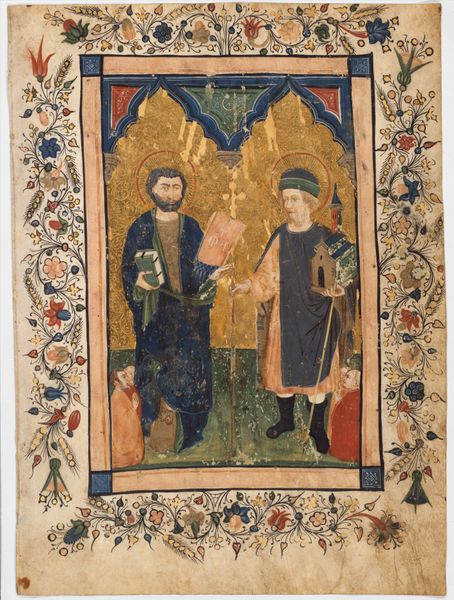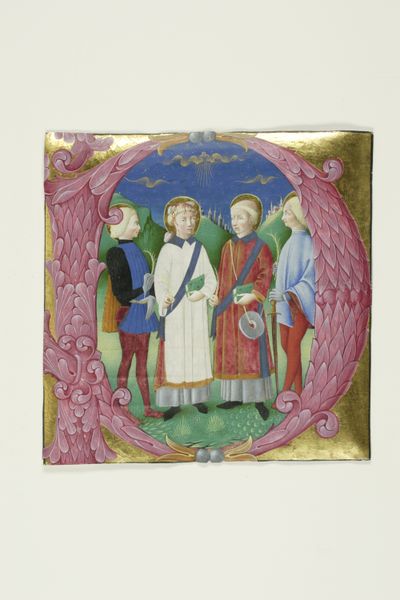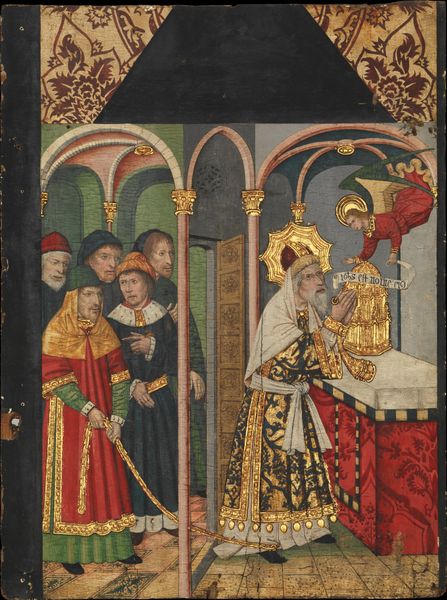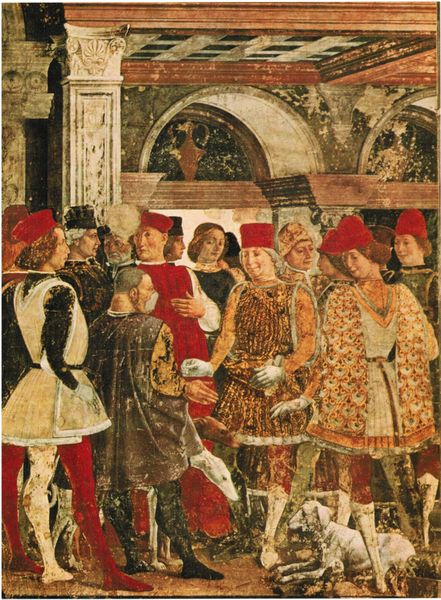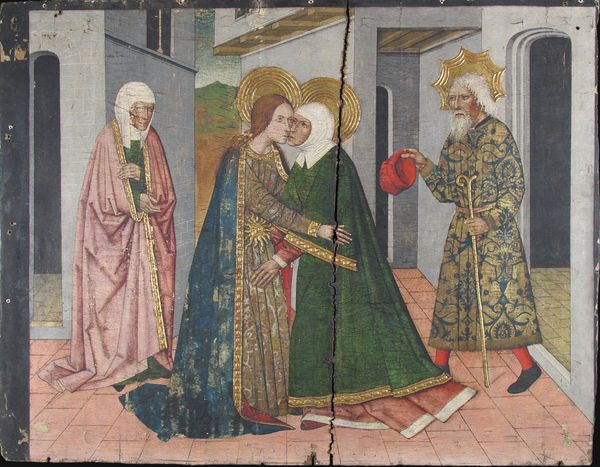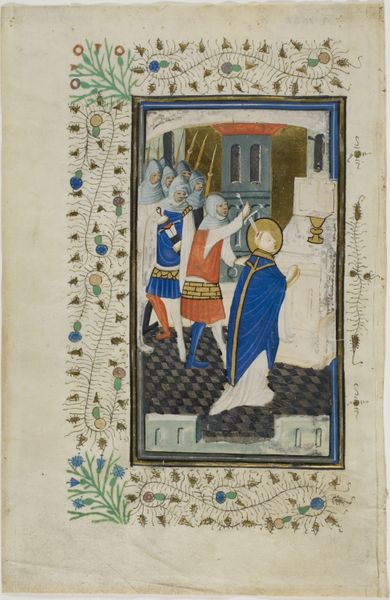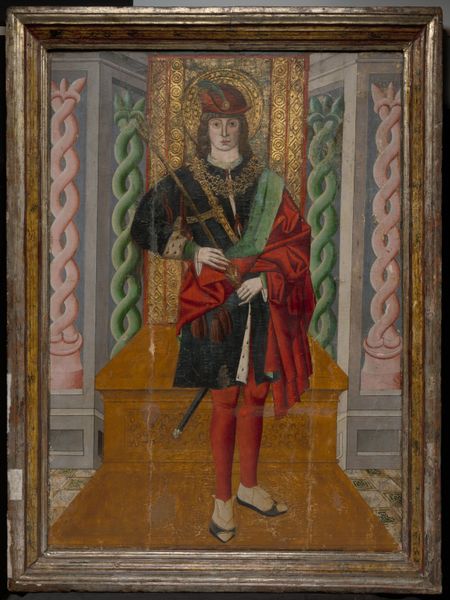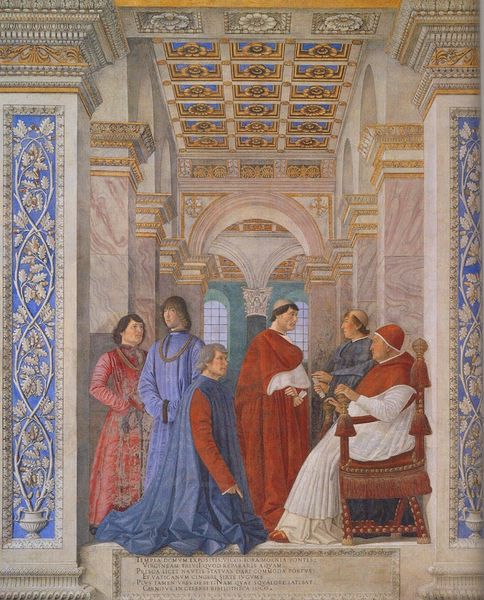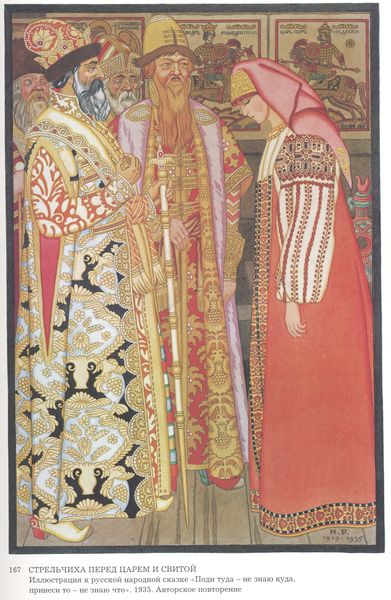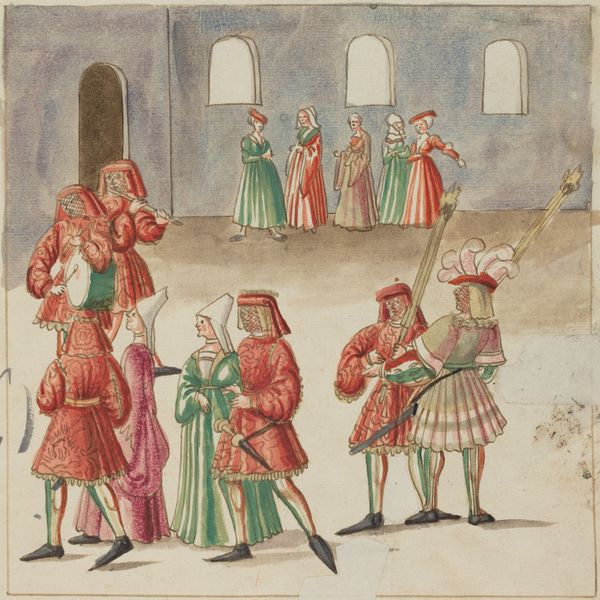
tempera, painting
#
portrait
#
venetian-painting
#
water colours
#
tempera
#
painting
#
oil painting
#
group-portraits
#
history-painting
#
early-renaissance
Copyright: Public domain
Curator: This tempera painting, attributed to Gentile Bellini, portrays "Andrea Vendramin, Doge of Venice, His Secretary, and a Papal Nuncio." Its exact date remains a mystery. Editor: Whoa, heavy hitters! Right away, I get this serious, almost theatrical vibe from those red and gold robes. It feels more like a stage tableau than a real-life pow-wow. Curator: That "tableau" feeling stems from Bellini’s placement of the figures. Vendramin, as Doge, is presented as a key negotiator, engaging in the complex intersection of Venetian and papal power. Consider the red and gold textile displayed prominently; these visual elements symbolize wealth and power but also the pressures of diplomatic encounters. Editor: Negotiating in style, eh? That textile looks opulent. But you know, I’m stuck on those serious expressions. What was at stake here? Was there beef? I bet there was beef! Curator: Certainly tensions existed. In 1471, when Vendramin took office, Venice walked a tightrope in relation to the papacy, particularly with conflicts over territorial ambitions and ecclesiastical authority. Bellini presents these three men as embodying distinct roles in these complex negotiations. Note how Vendramin subtly centers the composition, indicating the ruling power, Venice, within that landscape. Editor: Ah, now I see it! Everyone's so buttoned-up—I thought I was attending the opera instead. The limited space really intensifies that impression of high-stakes diplomacy, every expression is freighted with intent. And honestly, it's working. I kinda wanna know what they're whispering about now! Curator: Precisely. This wasn't merely about representation but also constructing and controlling a certain perception of power through art. Examining those social structures unveils how carefully these portraits negotiated image and identity. Editor: That's amazing to me—art as social strategy, shaping perceptions like political PR before PR even existed! What began as what appeared to me to be some boring portrait turns out to be, thanks to the work, to be more profound once looked into. Curator: And such layered readings invite us to question those historical visual codes as well, to see who had the power to commission images—and control their narratives.
Comments
No comments
Be the first to comment and join the conversation on the ultimate creative platform.
